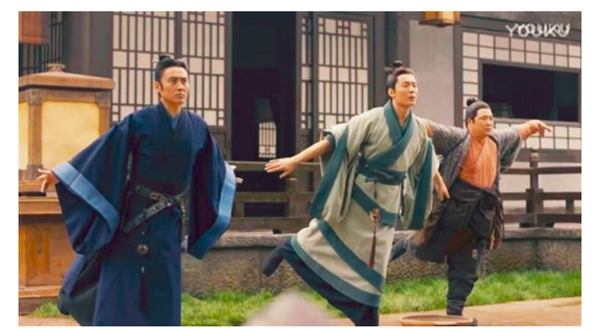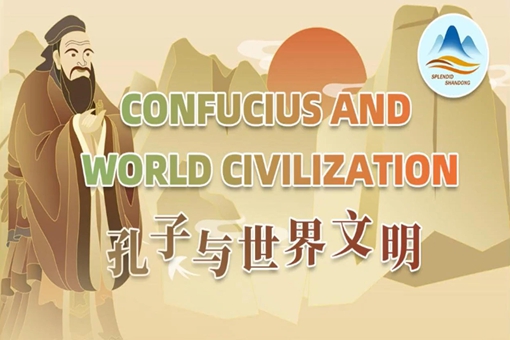Try classical indoor exercise: Wu Qin Xi
By Zhu Linyong | (chinadaily.com.cn)| Updated : 2020-03-18
Print Print
This screenshot shows actors dressed as ancient Chinese performing the bird stance from the Wu Qin Xi exercise. The scene is from Allies of the Strategists, a popular costume TV drama series in the Chinese mainland in 2017. [Photo/youku.com]
A popular health regime
But it was Wu Qin Xi that uplifted Hua to the status of a pop idol. Not long after Hua's invention, Wu Qin Xi became a fad among people from different social strata.
Legend has it that Sima Yi, a military general, government official and regent of the state of Cao Wei in the Three Kingdoms (220-280) period, did not give up doing Wu Qin Xi exercise even when he was in the frontline command, fighting against invading armies from Shu Han, a rival state.
Screenwriters have woven this story into Junshi Lianmeng (Allies of Strategists), a well-received TV costume drama series in 2017 that fueled the general public's renewed interest in the classic exercise.
Proven to be highly effective in maintaining good health, Wu Qin Xi as a "remedy exercise" has attracted the attention of generations of Chinese.
A source of inspiration
Sporadic daoyin qigong exercise methods existed before Hua's time, as shown by archaeological findings, but it is Hua Tuo who ushered in a new era when the genre of daoyin qigong exercise began flourishing.
The most eye-catching figure is Ge Hong, a well-known Daoist priest and physician during the Eastern Jin Dynasty (317-420), who devised his version of animal-mimicking exercise but admitted he drew inspiration from Wu Qin Xi. It is a pity that he did not give details about the methods in his book, Bao Pu Zi.
It was from Yangxing Yanminglu, a Daoist masterpiece written by Tao Hongjing of the Southern Dynasty (420-589), that health regime scholars today have found the earliest, complete elaborations of the Wu Qin Xi exercise.
Wu Qin Xi sustained its popularity in the Sui (581-618) and Tang (618-907) dynasties. Tang poets Liu Zongyuan and Li Shangyin both wrote vivid descriptions about how their friends practiced Wu Qin Xi exercise.
Inspired by Hua Tuo Wu Qin Xi exercise, Taoist grandmaster Chen Tuan of Song Dynasty (960-1279), created Liuhe Bafa Boxing, a kung fu style that is popular even today. Song Dynasty poets Lu You and Mei Yanchen both recorded in their poems how practicing the Wu Qin Xi helped them regain health quickly, besides taking herbal medicine.
In the Ming and Qing dynasties, however, Wu Qin Xi gradually became a tacit skill only for social elites. Apart from practicing it diligently, scholars published their lengthy studies on Hua Tuo's Wu Qin Xi.
Among the most influential works are Zhou Lujing's Chi Feng Sui, which contains both texts and illustrations. And martial artists at that time had also developed various animal-imitating or even insect-imitating styles, such as Tiger Boxing, Monkey Boxing, Snake Boxing, Crane Boxing, and Mantis Boxing.

 Insights from the 10th Nishan Forum
Insights from the 10th Nishan Forum  Confucian culture thrives: Integrating its wisdom into modern value
Confucian culture thrives: Integrating its wisdom into modern value  Confucianism's enduring influence: Shaping East, Southeast Asian civilizations
Confucianism's enduring influence: Shaping East, Southeast Asian civilizations